Established as a principality in the mid-14th century, the small medieval state of Moldova is best known for its fierce resistance against the Mongols and Turks, up until the 17th century. In a 350 years span of continuous war (mid 15th century to late 18th), devastation, rebuild, and more war, Moldova was one of the main Christian bulwarks against the Ottoman advance towards the Central and Western Europe. This land has seen so much war to last it a thousand years; and one of the main tools it employed to resist and retain its roots was the faith in the Orthodox Church. It was its main shield against invaders, a shield which protected the people and their ancestry. And it worked, we’re still here.
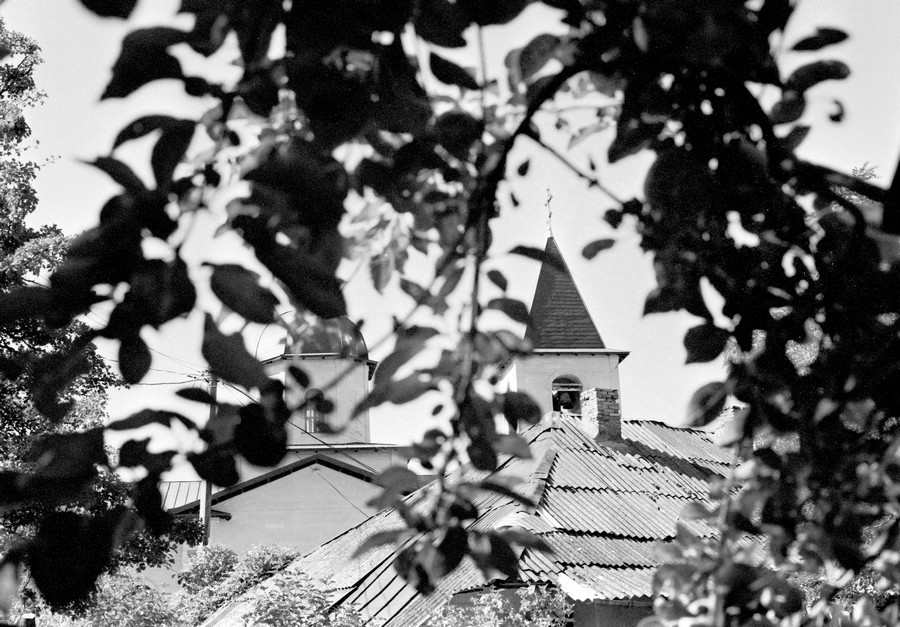
In the 19th century, the eastern half of Moldova (also known by its Russian given name of Bessarabia) fell under the Russian Empire, and that was a disaster for its ancient traditions, language and culture. Faith was, again, the way of resisting against the offensive deculturalization and change of, well, everything that was perceived as “the Moldovan” way of life. Churches and monasteries were reclaimed by the Eastern Orthodox Church; an entire history was rewritten. People resisted, but even faith cannot protect itself against time and incessant propaganda, mixed with violence and force. However, it endured, against all odds.
Attested in 1420 (probably built well before that), the Monastery of Varzaresti is the oldest monastery in the Republic of Moldova (the eastern half, taken by the Russian Empire, is now an independent country). Some 70 kms from the capital city of Chisinau, it rests among the hills of the Nisporeni County, half hidden by its shadowy valleys and forests that can be seen in that area. The nature is still looking to protect the monastery, although in this current time and age, the faith is safe from depredations. At least for now, that is.
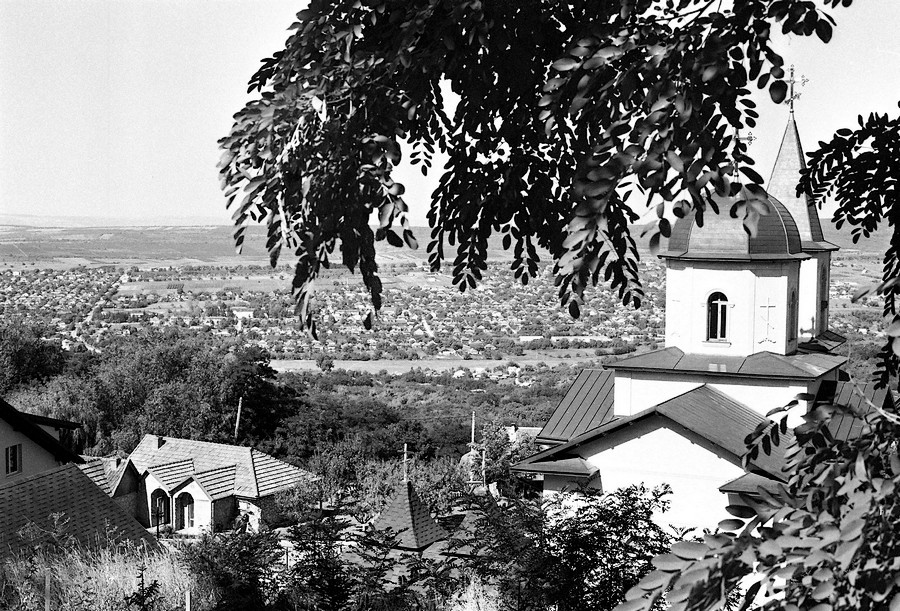
Monastery overlooking the commune of Varzaresti – Olympus OM1/Adox HR50
Burned and destroyed many times in its long and painful past, it was always rebuilt and rededicated, with the same patience and diligence, keeping the faith with the old and looking for better days with every new brick put on its foundation, hoping this will be the last time they had to make new what was destroyed. So, what we see today is the new monastery. New it may be, but the land still remembers its first foundations.
I have to say that the recent reconstruction style of the church itself is too modern for my taste. Here and now, I have a confession to make: I am more interested in the historical side of a monastery than in its significance as a religious house. And this goes hand in hand with the love for photography; is why I always try to understand the place, its historical significance, the architectural style, looking for bits of the original of old. Not much remains of that today, although if you look really hard, you can glimpse the Moldovan style, typical for this type of religious buildings. Resembling somehow the medieval Moldovan church architecture, it is nonetheless different; 2 centuries of different orthodox rule are bound to change this. But it hasn’t change the essential: the faith.
On a hill above the monastery there is a small cemetery, where generations of monks and priests are sleeping their eternal sleep, as if guarding the place. Many graves are old, from the 18th and 19th century, names have been erased by time and rain, but they are there, still part of the community.
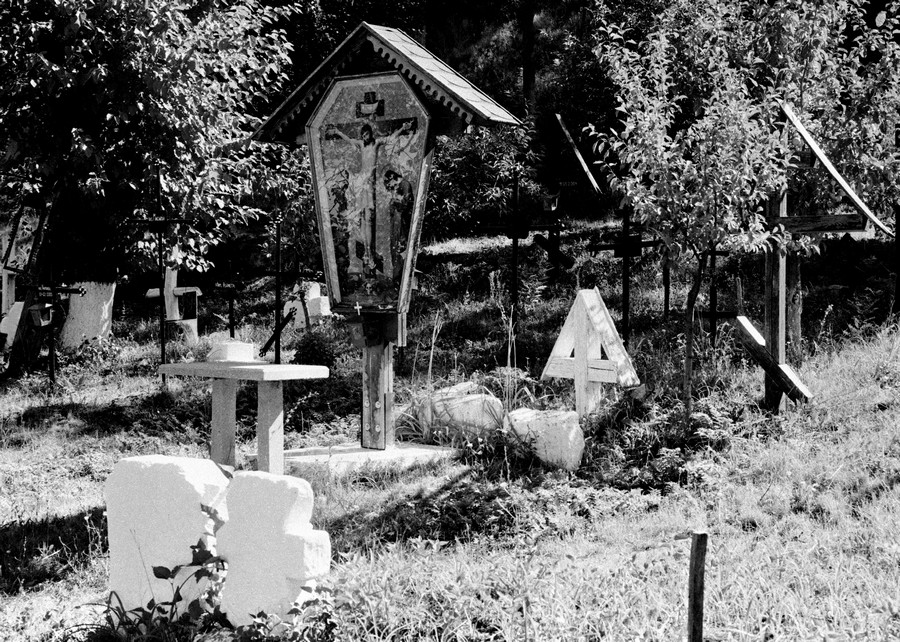
Timeless place of rest – Olympus OM1, Adox HR50
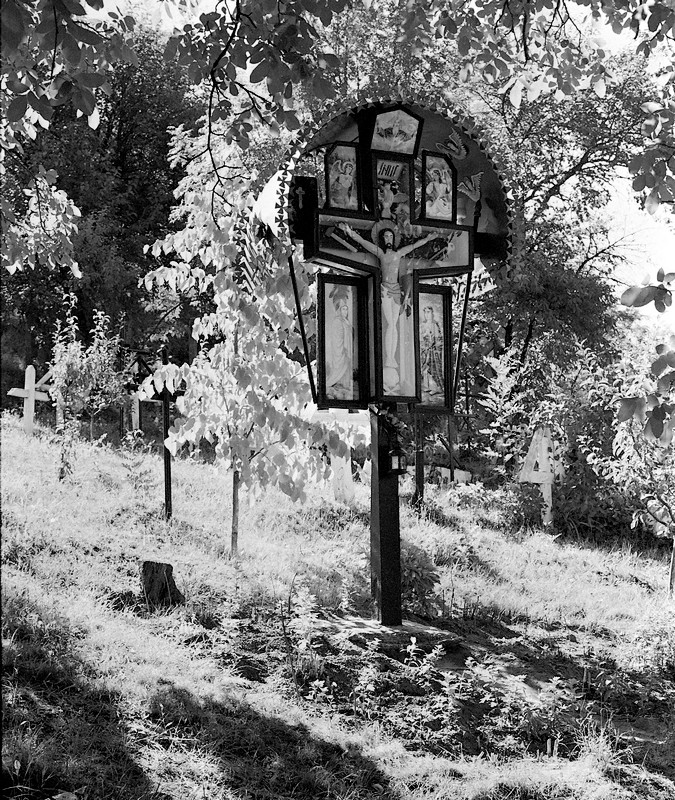
Sun is blessing this place – Olympus OM1, Adox HR50
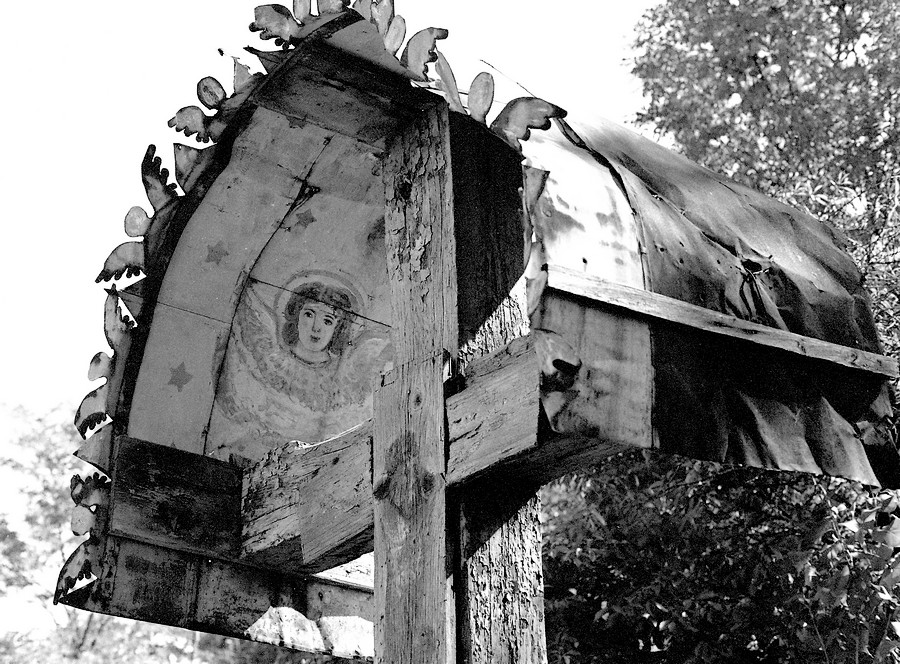
A sign of faith, local “troytsa” (cca 1920) – Olympus OM1, Adox HR50
My attention was drawn to this Christ on cross, which I believe is an old popular/naïve local work, perhaps some 70 yrs or more, old and battered. It once belonged in the church I guess, now confined to the cemetery. Is exposed to the elements, looks like it was exiled here, and it will probably not last in the near future. I do not know what to make of this, because if it was up to me, this piece of great work belongs in a museum or somewhere protected. But perhaps this is the best place for Christ, as light and beacon for its flock. He is still here.
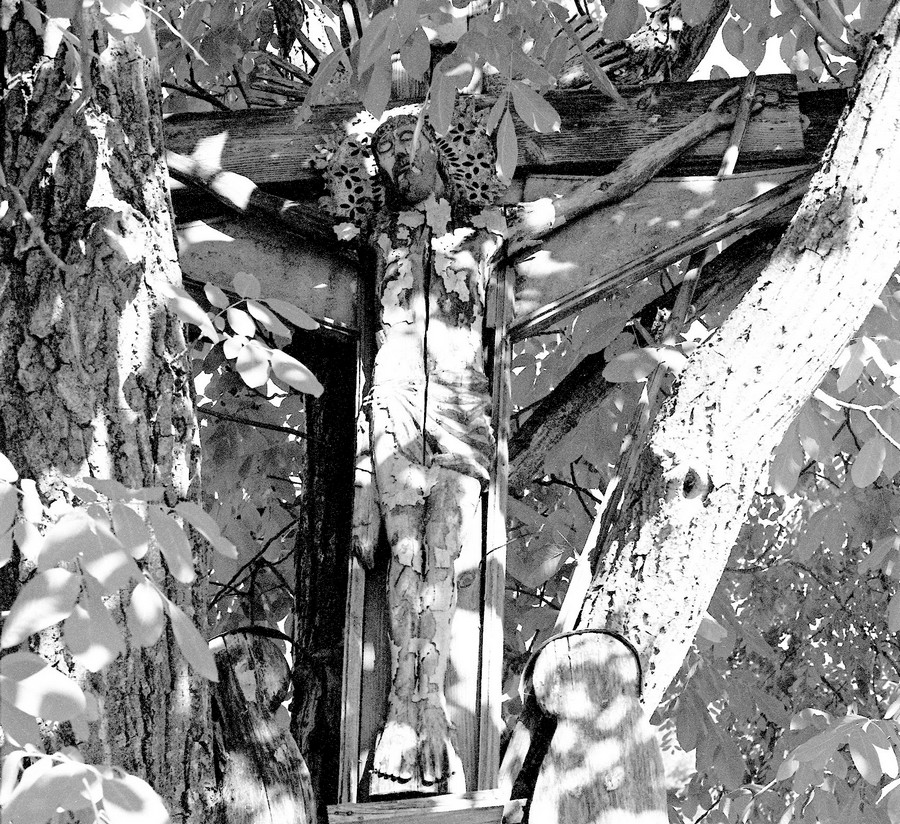
Battered Christ, a testimony of troubled times – Olympus OM1, Adox HR50
The monastery is a very active one, with the locals arriving here for every religious days or feasts. The women wear head scarfs and very conservative outfits, as per requirements of the orthodox faith, while men are always dressed with their best clothes, the “Sunday” ones, as they say. They bring their children with them, and speak to them about the old times, when this country was rich and powerful. They should also tell them about why the country is not anymore so, and about the who and when and why and how. Perhaps they do, for I believe such teachings are mandatory for the coming generations, so they will know the truth of their past. This way, they’ll know how to build their future.
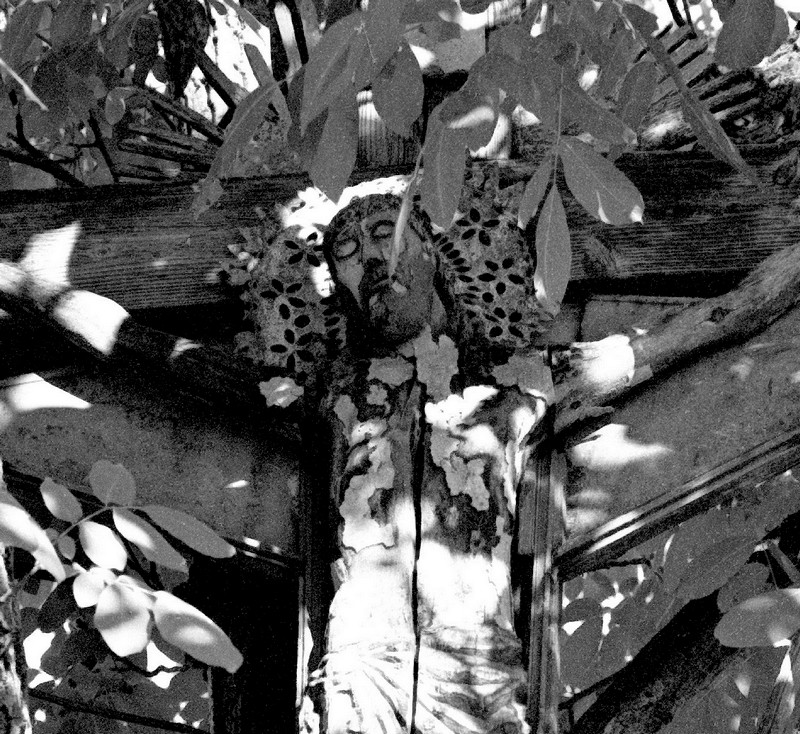
One more thing, to show how their faith also helped preserving the traditions as well: around the monastery, there are some buildings, smaller and humble, as befits the living in a religious community. The “kylia”, name of the place where the monks (or sisters) live are being refurbished and modernized, in the same time retaining the original style and materials: wood, clay and stone are put together in the traditional way.
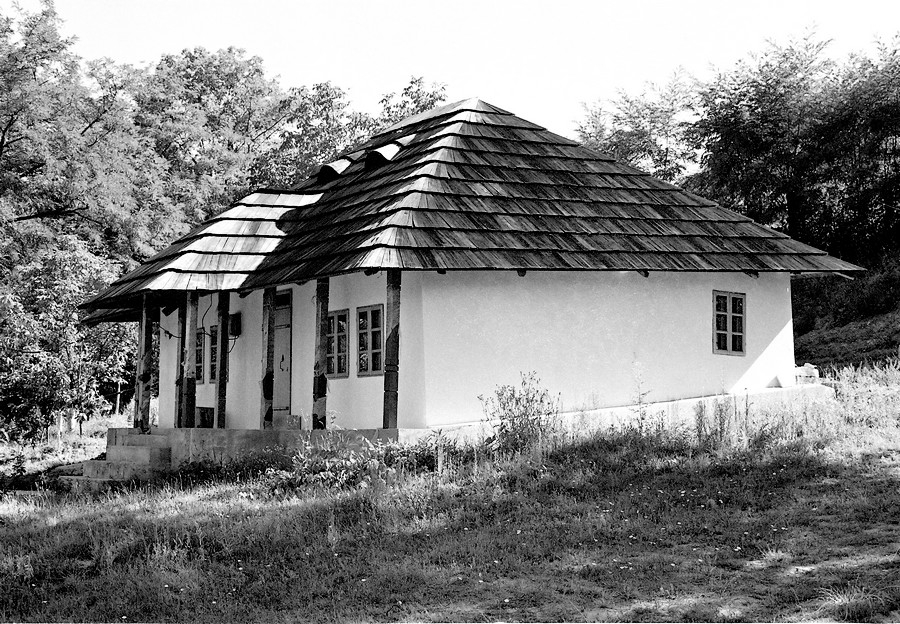
True Moldovan late medieval style, refurbished – Olympus OM1, Adox HR50
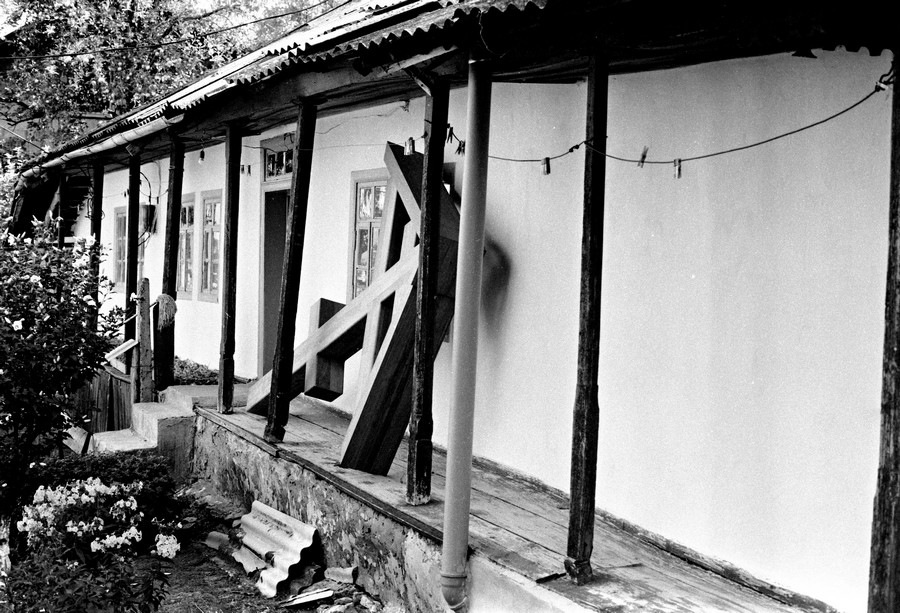
A new wooden Eastern Orthodox style cross, ready to be consecrated – Olympus OM1, Adox HR50
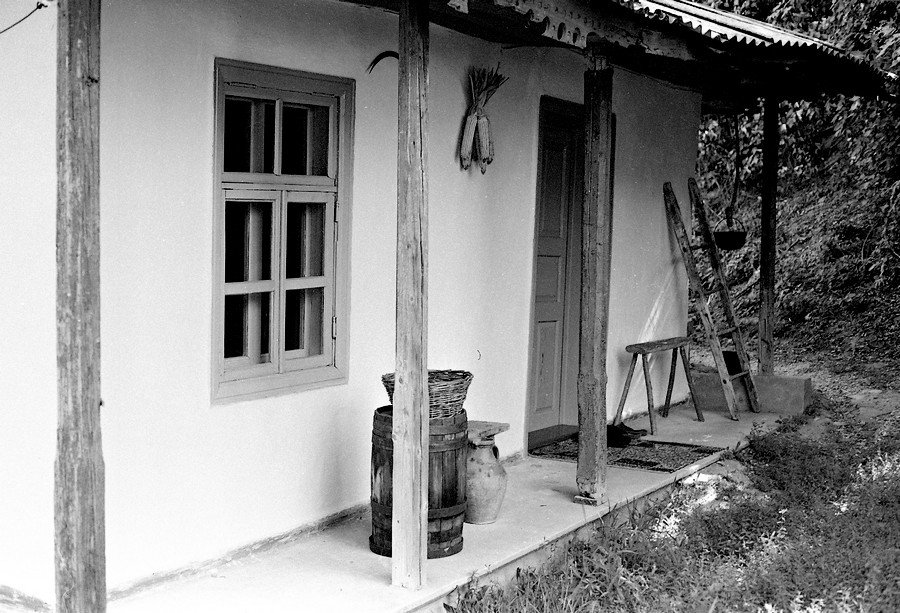
Traditional Moldovan house and rural implements – Olympus OM1, Adox HR50
All in all, it did me good to visit this place; if anything, it restored my positive belief that somehow, this small nation is going to make it. If they managed to keep the faith and have survived this far, they will succeed in turning their luck in the future, on their (rather complicated) road to their destiny. Of course, religion is not everything that makes a nation, but it helps.
PS – as you probably have noticed, I haven’t said much about the camera or the film, apart from the brief mentions under the photographs. Not much to say really; it is worth mentioning however that the developer used (Adox HR-DEV) is indeed better suited to this film than other devs I used in the past with this HR50.
That said, in hindsight, I should’ve used anything else than this film, given its particularities especially in harsh sun without a filter (red?), due to its spectral sensitivity. Food for next time thoughts.
Any mistakes made in the final frames are mine alone, such as the overexposure in places, or perhaps overdeveloping of some sort, if any. To be honest, the images could’ve been a lot better.
Share this post:
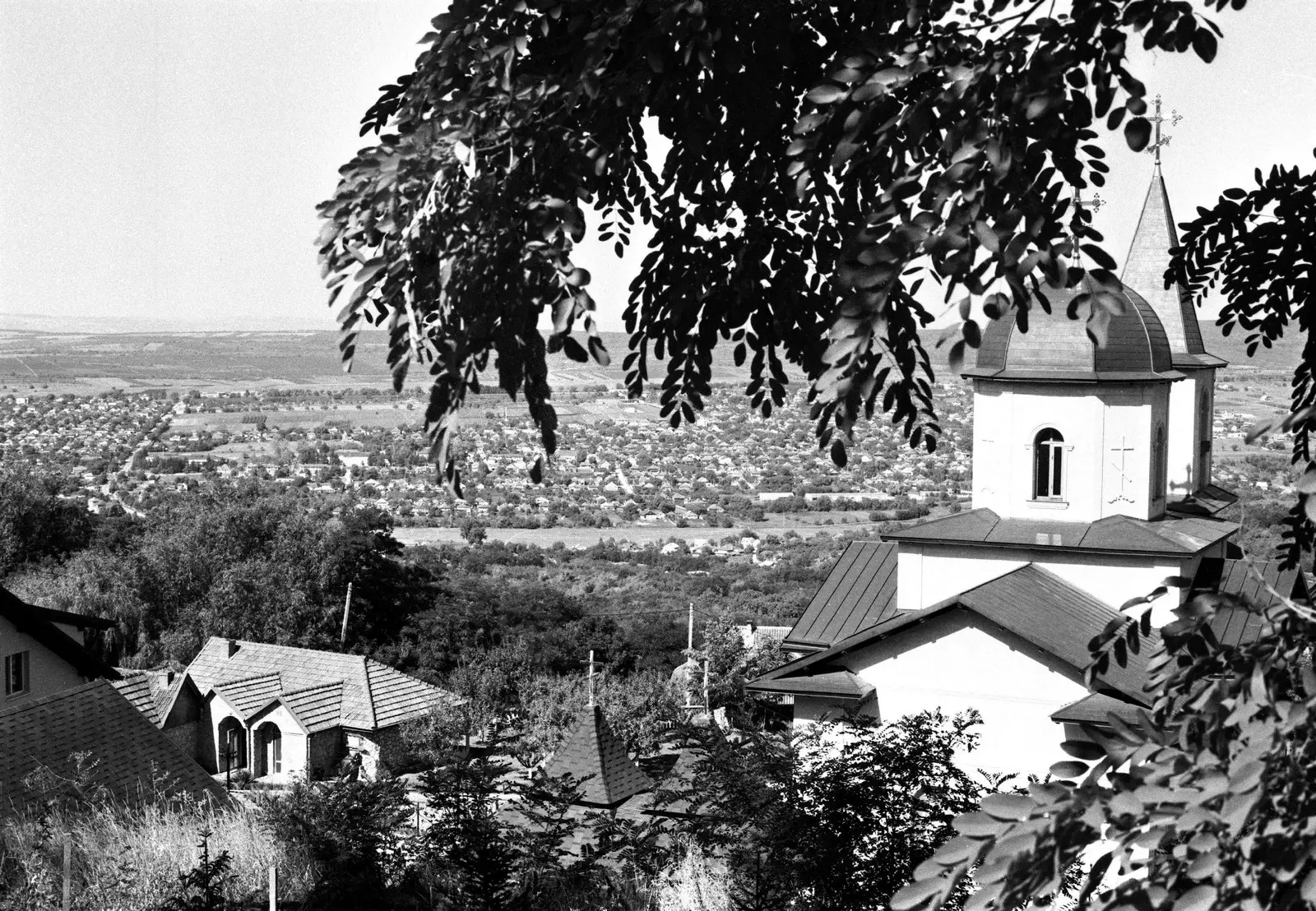








Comments
Peter Roberts on Monastery of Varzaresti, Moldova – resistance through faith and tradition
Comment posted: 27/09/2023
One's harshest critic is oneself, which is how it should be. I didn't notice anything too amiss with the images until you mentioned it at the end. A few blown highlights in some, perhaps, but nothing that seroiusly detracted from the overall effect for me. Quite the reverse, in fact, because it immediately conjured up the impression of harsh, unrelenting sunlight.
Comment posted: 27/09/2023
Comment posted: 27/09/2023
Comment posted: 27/09/2023
Tony Warren on Monastery of Varzaresti, Moldova – resistance through faith and tradition
Comment posted: 27/09/2023
There is much of the spirit of central and eastern Europe about Moldova's history, especially in these difficult times. If only some people would learn from history rather than repeating it.
Photographically I wouldn't complain about any of your images. Yes they are contrasty but then you were shooting in harsh light. Nothing is lost and the atmosphere is maintained. Your film seems to be similar to Rollei's Superpan 200 which has extended red sensitivity and is one of my favourites.
Again, thank you for such an interesting piece.
Comment posted: 27/09/2023
Louis A. Sousa on Monastery of Varzaresti, Moldova – resistance through faith and tradition
Comment posted: 28/09/2023
Comment posted: 28/09/2023
Geoff Chaplin on Monastery of Varzaresti, Moldova – resistance through faith and tradition
Comment posted: 28/09/2023
I agree with the other comments regarding the images, contrasty or not the important point is do they relate the atmosphere and reality of the place consistent with the text, which they do very well. Thanks.
Comment posted: 28/09/2023
Gary on Monastery of Varzaresti, Moldova – resistance through faith and tradition
Comment posted: 29/09/2023
Comment posted: 29/09/2023